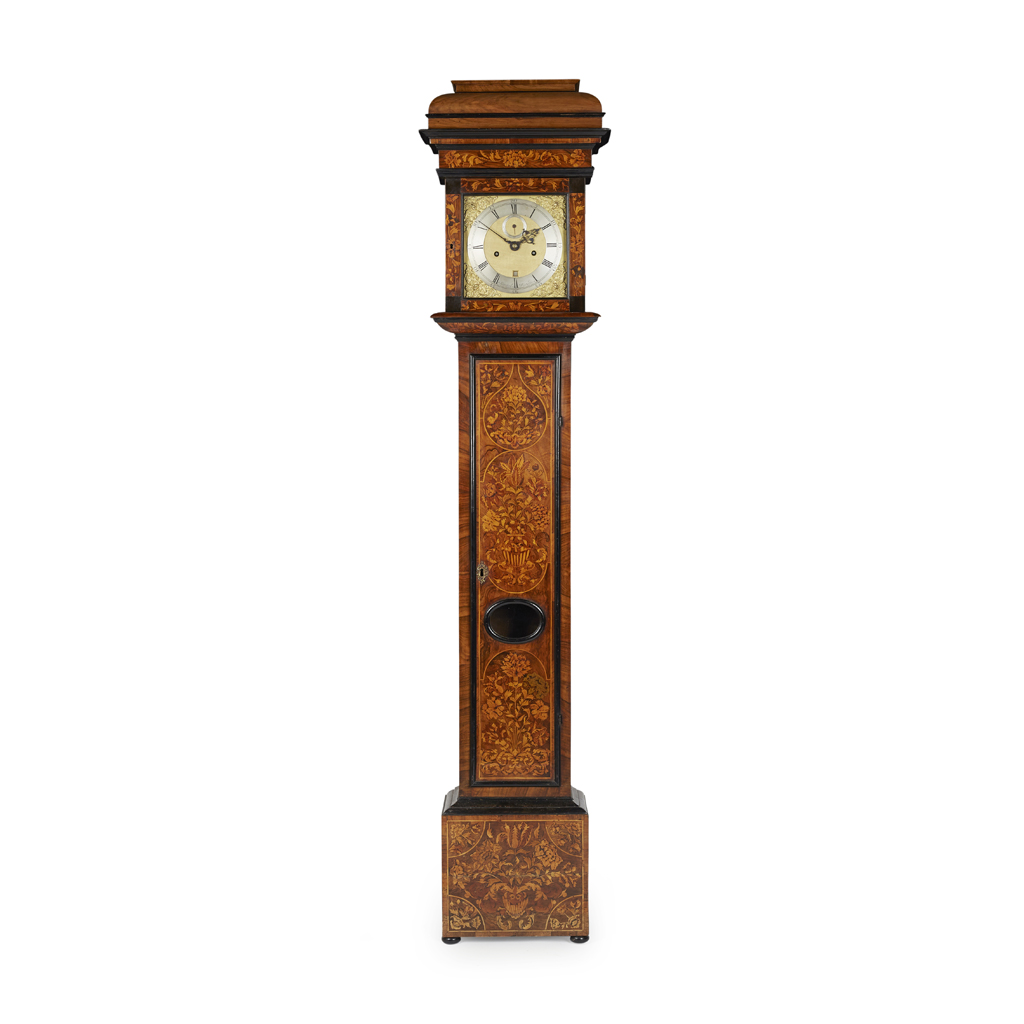WILLIAM AND MARY MARQUETRY LONGCASE CLOCK BY SAMUEL WATSON
LATE 17TH CENTURY
£12,000
Fine Furniture and Works of Art
Auction: 27 September 2017 at 11:00 BST
Description
the square brass 10in. dial with silvered chapter ring with Roman numerals, subsidiary seconds dial, date aperture, and two winding holes, inscribed SAMUEL WATSON, the hood with a caddy top above a tall trunk door with an oval lenticle, on a plinth base, the case profusely inlaid with floral and foliate marquetry and ebonised trim
Dimensions
46cm wide, 208cm high, 26cm deep
Footnote
Provenance:
A Private Scottish Collection
Note:
Samuel Watson was as an important clock and watchmaker at the end of the 17th and early 18th centuries, first in Coventry, later moving to London in 1690 where he set up business in Long Acre. He was a Free Brother of the Clockmaker's Company from 1687 to about 1710 and although not much is known about his life, he was well-regarded and noted for the timekeeping innovations he developed including the five-minute repeater watch. Self titled 'Mathematician in Ordinary to his Majesty', Watson was commissioned twice by Charles II for astronomical clocks, the first time in 1682, and then again in 1683. The second commission wasn't completed until 1690, after Charles' death, and the clock was eventually purchased by Queen Mary for Kensington Palace. It now resides in the Royal Collection at Windsor Castle, albeit in a different case. The original case, which may not have been to Mary's taste, is likely the case containing a different Watson movement in the collection of the Herbert Art Gallery and Museum in Coventry. Another important client was Sir Isaac Newton, for whom Watson made two astromomical clocks.

